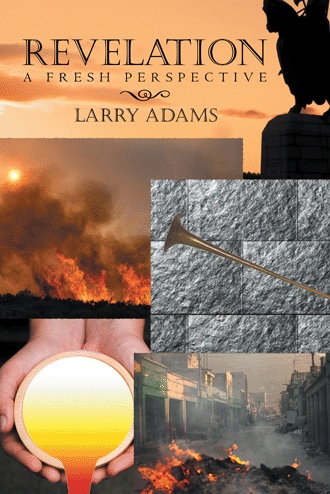This chapter is the introduction to the vision given to the Apostle John while he was on the island of Patmos around the years AD 95-96. John identifies his encounter with the ascended Christ, the purpose of the prophecy, and who the prophecy is for—the churches. Who the prophecy is for is identified eleven times in chapters 1, 2, and 3, and reemphasized in 22:16 (12 times total)—the church. At the beginning and the end of the prophecy the intended recipients are identified as the churches, not Israel, not Jews only, but to the churches. Revelation 1:1 references “bond-servants”—born again Christians like John himself. Revelation 1:4 references “John to the seven churches...” Revelation 1:9 says “your brother and fellow partaker in the tribulation and kingdom and perseverance which are in Jesus,” indicating this is for those like John who follow Jesus, i.e., the churches, comprised of saints.
Revelation 1:11 states: “Write in a book what you see, and send it to the seven churches...” Verse 1:20 identifies two separate items that are defined as being the churches. Chapters 2 and 3 contain seven letters, each one addressed to a specific church (seven churches, not the twelve tribes). Just because there are two references to 144,000 who are obviously Jews in Israel, does not invalidate the “overemphasis” provided that this vision is for the churches. I suspect that Christ already knew of Satan’s diversionary tactics that would take place near the end times to get us distracted from the focus of Revelation’s content.
Chapter 1 also identifies several relationships that are important to our understanding of the rest of the vision. One of these would be that Christ is at the right hand of God, in the midst of the churches, which are represented by the lamp stands. To understand this you need to closely examine the Tabernacle built by Moses and the Israelites back in the book of Exodus. There is also a relation between the seven stars in His right hand, the lamp stands, and the angels of the churches. (v20) Note it is the messengers OF the churches, not the messengers TO the churches. These messengers go out from the churches; these are not the pastors giving messages to the churches (angel means messenger). The messenger TO the churches is the Holy Spirit as identified in each of the letters to the churches in chapters 2 & 3 (Listen to what the Spirit says TO the churches). It is important to recognize that the words “OF” and “TO” can indicate source and destination, they are not necessarily the same.
A description of Jesus is given by John that includes the following details:
• one like a son of man,
• a robe to the feet,
• a golden sash across His chest,
• head and hair white like wool or snow,
• eyes like flames of fire,
• feet like glowing burnished bronze,
• voice like the roar of waters.
Also there are the following descriptions of Jesus:
• seven stars in His right hand,
• a two-edged sword from His mouth,
• and His face was “like the sun shining in its strength.”
Keep in mind the description of His face—it will give us understanding later in the book of Revelation.
Jesus identifies His authority with the following statements:
• “I am the first and last,”
• “the Living One,”
• “I was dead but now am alive,”
• “I have the keys of Death and Hades.”
These identifications of Jesus authority will be seen later in the letters in chapters 2 and 3, and later in the vision.
John is given instructions to: write the things he has seen (chapter 1), the things which are (chapters 2 & 3), and the things which will take place after these things (chapters 4-22). (vs11, 19) Jesus then identifies a relation between some of the symbols here in chapter 1. The seven stars in His right hand are the angels (messengers) of the seven churches, and the lamp stands are the seven churches. (v20) Keep these characteristics of Jesus and the relationships He identifies here in mind when reading the rest of the vision.
Make a particular note that what is actually seen by John is seven stars in the hand of Jesus, not any actual angels (messengers). Neither are actual angels viewed in chapters 2 and 3, the letters to the seven churches. The angels of churches are only in view after the Rapture, which, as we will see, takes place at the beginning of chapter 4.


